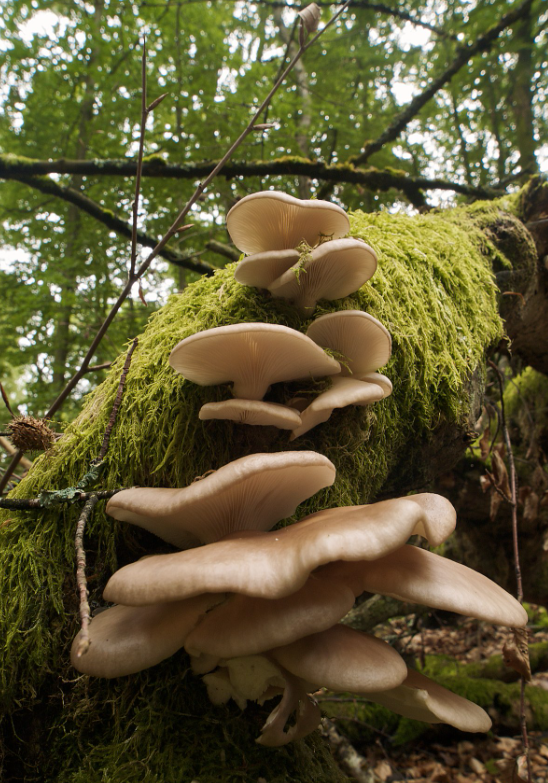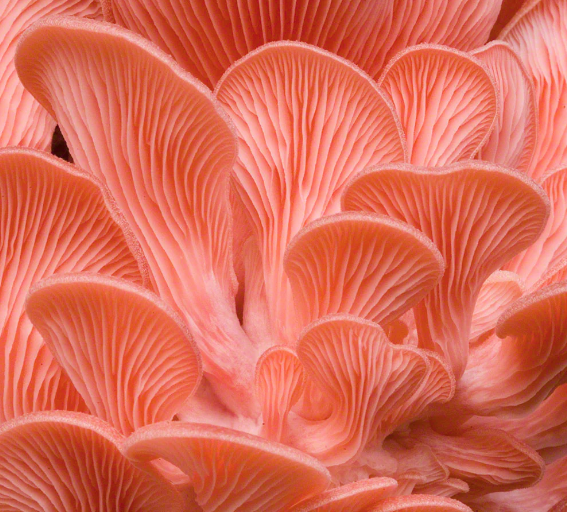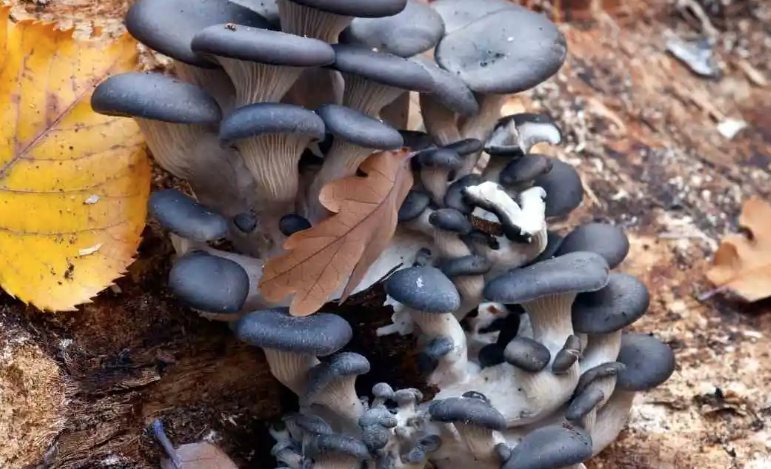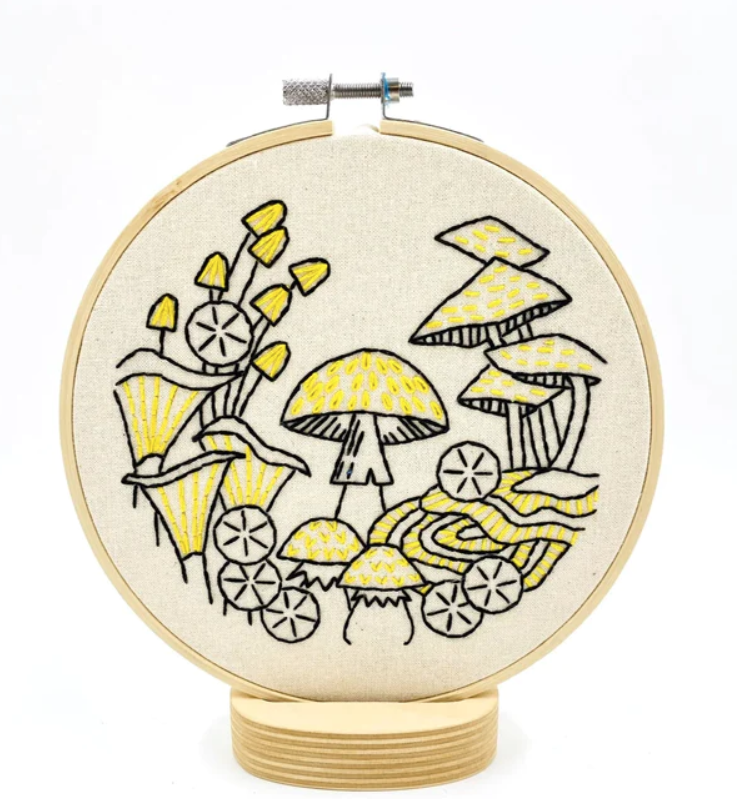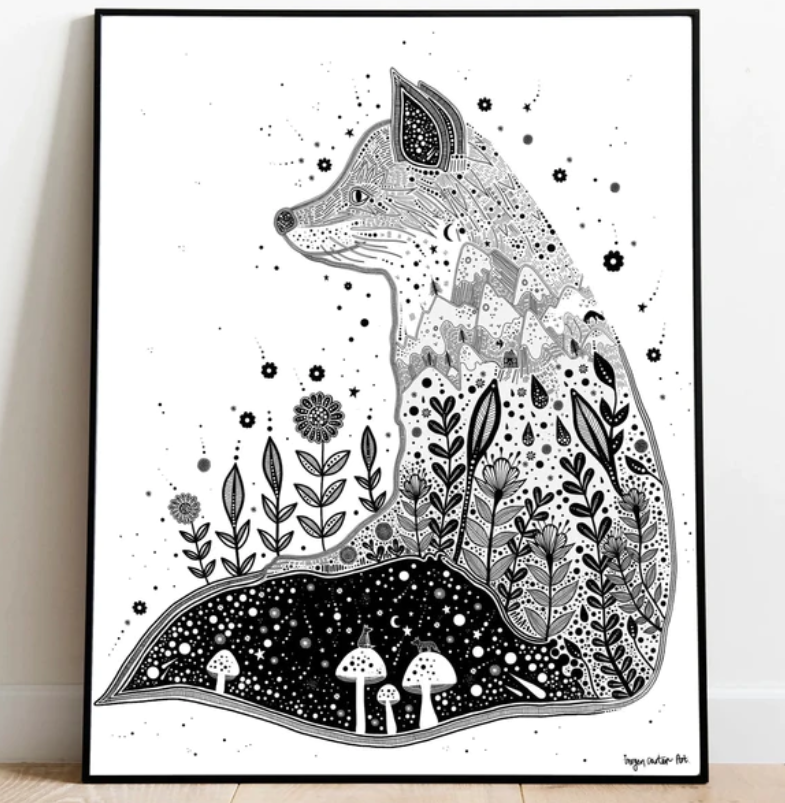Beyond appreciating them in cooking, what are oyster mushrooms good for? Pleurotus mushroom varieties, such as oyster mushrooms, play a crucial ecological role, particularly in contaminated environments, through a process known as mycoremediation.
Some Surprising Oyster Mushroom Facts and Our Fave Recipes
What are Oyster Mushrooms?
Pleurotus ostreatus, colloquially known as the oyster mushroom, oyster fungus, pearl oyster mushroom, or hiratake, stands as a prevalent edible fungus, and is a commonly foraged wild and cultivated mushroom. The Western culinary and wellness landscapes have witnessed a surge in fascination for mushrooms in recent years, with oyster mushrooms recipes taking centre stage. Stay with us to the conclusion of Nectar's March blog post for our top oyster mushroom dishes. Meanwhile, let's delve into some intriguing facts about oyster mushrooms, shedding light on Pleurotus' ecological significance, nutritional benefits, how to select them at grocery stores, and the oyster mushroom’s spiritual meaning.
As you may have already read on our website or heard us at guest arrival orientations, Nectar’s commitment is to care for and deeply know this land, its forests, and waterways. This has always formed the core of our overnight stays, transformative retreat experiences, and programs, intending to facilitate a slow-down that seeds consciousness, inspired by the immersion in the natural world. If you’re new to our blog, we invite you to explore our recent stories on Mosses and Pines.
Oyster Mushroom’s Habitat and Physiology
The oyster mushroom is widespread in many temperate and subtropical forests throughout the world. In the Pacific Northwest, the variety of oyster mushroom found here is Pleurotus pulmonarius (commonly known as Indian oyster, Italian oyster, phoenix mushroom, or the lung oyster). Both Pleurotus ostreatus and P. pulmonarius are gilled, velvety to the touch, dense in texture, and can be found in greys and blues. Other species of Pleurotus also come in golden and pinks.
While Pleurotus pulmonarius naturally thrives on Bowen Island, BC, making it a common sighting for Nectar Retreat Centre guests exploring the forest trails, caution prevails due to the presence of toxic fungi that bear a striking resemblance to both P. ostreatus and P. pulmonarius. Specifically, Omphalotus olivascens, known as the western jack-o'-lantern mushroom, and Clitocybe dealbata, the ivory funnel mushroom, share visual similarities. Recognizing the challenge of accurate differentiation as well as the possibility of overharvest, our primary focus remains on preserving the flourishing diversity of mushroom fruiting bodies within the temperate rainforests of Bowen, and sharing the wonders of these organisms.
Three Key Ecological Contributions of Oyster Mushrooms
Oyster Mushrooms Feed on Death to Give Life
Beyond appreciating them in cooking, what are oyster mushrooms good for? Pleurotus varieties are saprotrophs that are involved in providing nutrition to its ecosystem as a primary decomposer of wood, especially deciduous trees, and beech trees in particular, though here in the Pacific Northwest, oyster mushrooms are also seen growing on dying hardwood trees. Their saprophytic function benefits the forest by returning vital elements and minerals to the environment in forms that are usable to other plants, other organisms, and general soil biology.
Oyster Mushrooms are Mycoremediators
Pleurotus species, owing to their extensive biomass and prolific mycelial production, exhibit significant biosorption potential. Notably, Pleurotus ostreatus stands out as an exceptionally versatile fungi for mycoremediation purposes. Its capability to decompose diverse substances, ranging from petroleum and plastics to mercury and synthetic dyes, positions it as a renewable solution to address human-generated waste, pollution challenges, and other environmental concerns.
Oyster Mushrooms Suppress Soil Disease in Gardens
All Pleurotus varieties are among the few known carnivorous mushrooms, also called nematophagous fungi. Oyster mushrooms specialize in trapping and digesting roundworms and eel worms through their mycelia (root-like structure of a fungus consisting of a mass of thread-like branching), obtaining nitrogen, playing a crucial role in natural soil ecosystem maintenance without chemical interventions.
Both Pleurotus ostreatus and P. pulmonarius are gilled, velvety to the touch, dense in texture, and can be found in greys and blues. Image via pnwspore.com.
Oyster Mushrooms and Well-being
According to Healthline, Oyster mushrooms are an excellent source of protein, fiber, and various essential vitamins and minerals, particularly B vitamins and copper. They are low in fat and calories, while providing potassium, which is beneficial for maintaining healthy blood pressure levels. The presence of beta-glucans, a type of polysaccharide, is believed to enhance immune function and help the body defend against infections. Additionally, oyster mushrooms contain lovastatin, a compound known for its cholesterol-lowering properties.
Traditional Chinese Medicine (TCM) has embraced oyster mushrooms for centuries, acknowledging their immune-boosting and anti-inflammatory properties. In the realm of TCM, foods are categorized based on their impact on the body, including whether they are "warming" or "cooling," as well as their taste. Oyster mushrooms fall into the warm, sweet, and pungent category. They influence the acupuncture meridians linked to the liver and kidney, contributing to a boost in the body's yang energy. In this way, oyster mushrooms are classified as energy and immunity enhancers. Oyster mushrooms may play a preventive role in addressing common age-related concerns such as cold extremities, weakness, low energy levels, and lower back issues—conditions associated with a decline in Kidney energy and the Water element in TCM.
Oyster Mushroom Spiritual Meaning
In various folk, shamanic, and magical traditions across the globe, mushrooms are commonly associated with the Underworld. Notably, oyster mushrooms and other fungi, with their mycelia delving deep below the surface, are often linked to the womb of diverse goddesses such as Hel, Saivo, Holda/Frau Holle, Durga, Kali, Xibalba, Annwyn, and more.
Mother Nature has designated fungi and mushrooms as her natural recyclers, transforming the old into the new. This seasonal decomposition process, breaking down aged, deceased matter, as well as toxins to give rise to something fresh, and points to both grief and hope.
The enchanting aspect lies in the prevalence of mushrooms in fairy tales and folklore, continuing to captivate imaginations today through illustrations and embroidery. Unsurprisingly, mushrooms persistently maintain connections to the Underworld in these narratives, adding an air of mystery and symbolism to their existence.
The concept of the Underworld, not exclusive to Indo-European origins, though distinct from the ideal of hell as a place of punishment, predates numerous cultures worldwide. It serves as a realm of chaos, incubation, transformation, often associated with ancestors, rebirth, and the recycling of all that has reached the end of its life cycle and to look at what will emerge next. Frequently depicted as a womb or a subterranean cavern, the Underworld embodies the profound and cyclical nature of existence (helpful hint: if you’re wanting to call in funghi wisdom in a seasonal way, we highly recommend the Magic Of I Mycology Journal).
How to Select and Handle Oyster Mushrooms
When at the grocery store or farmers’ market, select clusters of oyster mushrooms that are firm with a fresh, smooth appearance. The surface should be velvety and dry, though not dried out, with a plump appearance. Oyster mushrooms, through varied Pleurotus species, can be found in grays, goldens, pinks, or blues.
Either store mushrooms in original packaging or in a porous paper bag for prolonged shelf life in the fridge for up to a week, being careful to avoid freezing. To clean oyster mushrooms, brush off any debris from mushrooms with fingers or soft muslin cloth.
Cooking with Oyster Mushrooms
Oyster mushrooms are the third largest cultivated mushroom in the world, and it’s no surprise as they are loved by people of all diets. Nectar is honoured to provide freshly hand-made, seasonal and mouthwatering plant-based breakfasts to Nectar Experience guests that even Condé Nast Traveler is talking about, as well as lunches and dinners to our retreat guests.
As we compiled a list of easy oyster mushroom recipes for you to make at home, we are reminded of how oyster mushrooms have a way of redirecting our focus back to our bodies, our planet, and our homes. In celebrating the interconnectedness of our well-being and the environment, we invite you to savour the simple pleasures of home-cooked mushroom dishes, and to deepen your connection to all living beings.
Additional Works Cited
https://www.mushroomcouncil.com
https://www.healthline.com
https://grocycle.com
https://en.wikipedia.org
https://draxe.com
https://thewickedgriffin.com
https://www.mushroomcouncil.com
https://www.researchgate.net
https://innerworksacupuncture.com
https://pnwspore.com
https://learn.freshcap.com
https://oneplanetlife.com
https://wikipedia.com




